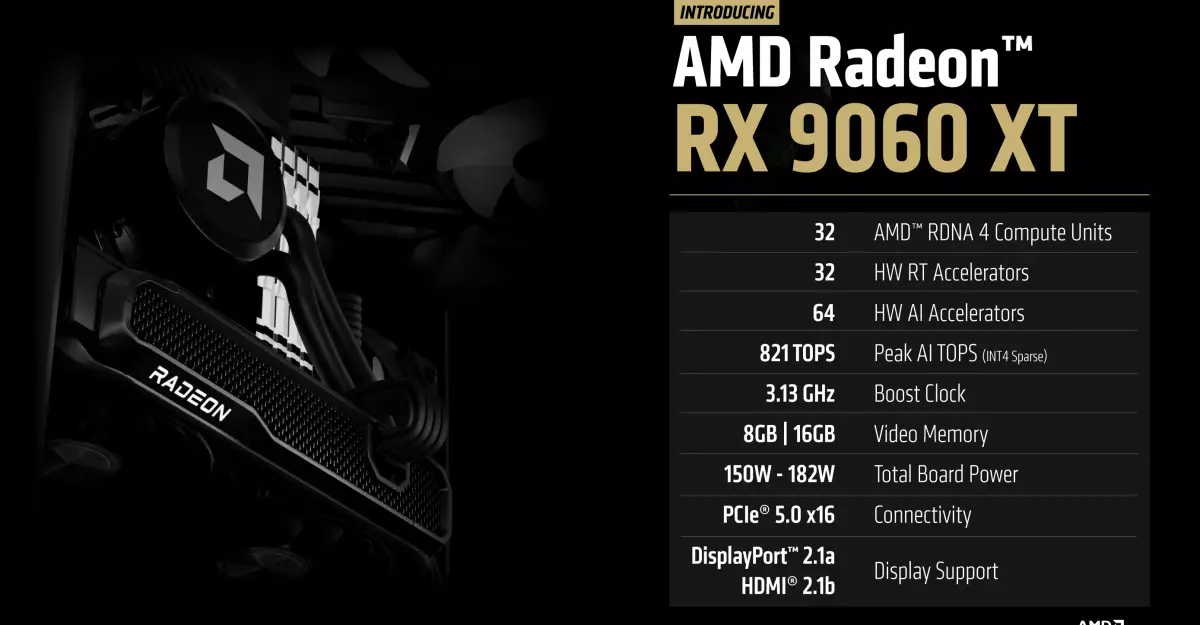In a world where anticipation can shape market dynamics, AMD is opting for a tactical silence regarding the price and release date of its new Radeon RX 9060 XT GPU. This decision raises eyebrows among tech enthusiasts and industry analysts alike, especially considering the buzz surrounding its launch during Computex. Silence can sometimes signal confidence, but in this fast-paced technological landscape, it might also indicate uncertainty about how this offering will measure up against fierce competitor Nvidia, particularly with Nvidia’s freshly minted RTX 5060.
Kicking Off the Battle: Specs That Demand Attention
The specifications of the RX 9060 XT reveal a fierce contender. Boasting 32 RDNA 4 compute units and a boost clock speed of 3.13GHz, this GPU is engineered for performance. Additionally, the variability in VRAM options — 8GB and 16GB — will arm gamers with choices, albeit choices that are mired in controversy. The gaming world has been buzzing with discontent over 8GB being insufficient for certain modern titles, which necessitate high memory bandwidth for seamless experiences. This mirrors Nvidia’s approach, which has recently come under fire.
Here, AMD’s strategy raises questions. Are they wisely catering to the mid-range market with options that players demand, or are they falling into the same pitfalls that their rival has? This walk on the tightrope will be scrutinized as performance reviews inevitably trickle out.
Navigating Controversy: The VRAM Debate
The ongoing debate regarding 8GB of VRAM is more than just a technical specification; it has become a litmus test for gamer satisfaction and future-proofing their systems. As demands from next-gen games continue to rise, AMD’s decision to include 8GB models alongside 16GB may come back to haunt them if the RX 9060 XT struggles under the weight of future game releases. Customers could find themselves in a precarious position if the 8GB variant ultimately proves inadequate, leading to potential backlash.
Adding fuel to this fire is Nvidia’s recent launch of the RTX 5060 without enabling prior reviews, suggesting a cautious approach to managing public perception amid existing VRAM concerns. AMD finds itself in the peculiar position of having to navigate both consumer enthusiasm and industry skepticism, and how they address these issues may define the RX 9060 XT’s legacy.
Competitive Landscape: AMD vs Nvidia
The GPU market has never been more competitive, and with AMD stepping up its game, the stakes are higher than ever. AMD is not just releasing a new product but potentially signaling a shift in their approach to how they compete with Nvidia. By mirroring some of Nvidia’s controversial choices, AMD risks alienating the very audience looking for improvements and value.
This rivalry extends beyond hardware specifications. It is characterized by strategic marketing, public relations maneuvers, and community engagement. As seen with platforms like YouTube, where popular channels critique and dissect GPU offerings, maintaining a positive reputation is essential. AMD needs to engage openly with its audience, addressing concerns that arise from the similarities with Nvidia while ensuring that its innovative aspects are highlighted effectively.
As both companies navigate this complex landscape, the user community waits with bated breath, ready to dissect, celebrate, or criticize the outcomes of these decisions. Each announcement and review will be crucial in shaping the future of graphics performance and user trust in these market leaders.

